DNA reveals the past and future of coral reefs
New DNA techniques are being used to understand how coral reacted to the end of the last ice age in order to better predict how they will cope with current changes to the climate. James Cook Univer

From 2005 to 2022, the main node of the ARC Centre of Excellence for Coral Reef Studies was headquartered at James Cook University in Townsville, Queensland (Australia)
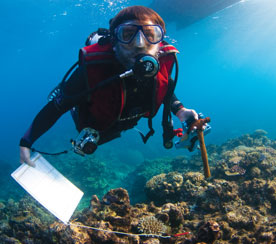
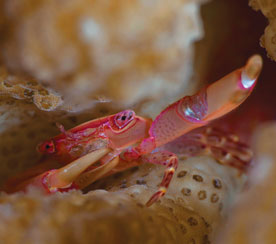
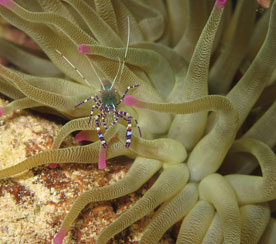
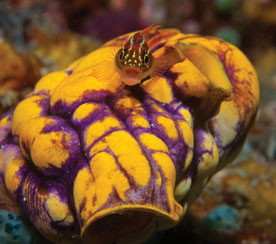

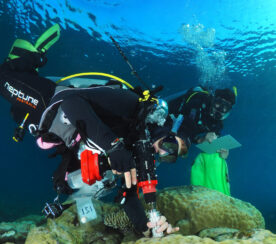
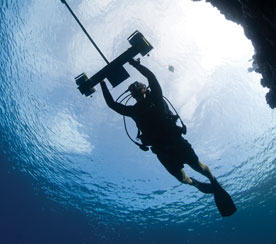
Vanessa was raised in New Mexico (USA) and completed dual degrees in mathematics and a degree in biology at Washington and Lee University. She spent a year as a Fulbright scholar doing research with Prof. Hugh Possingham at University of Queensland. She is currently undertaking her PhD at James Cook University with Prof. Bob Pressey and Assoc. Prof. Natalie Stoeckl. The primary focus of her PhD is how to incorporate cost considerations in systematic conservation planning so that conservation targets can be achieved at a minimal cost (both social and economic considerations). She is interested in efficiency gains of including costs as well as uncertainties associated with the decision making process.
A general goal of systematic conservation planning is to maximize conservation benefits while minimizing socio-economic costs. When designing marine protected areas, most studies have assumed homogenous costs. Methods of creating heterogeneous cost layers for marine planning have included several approaches to mapping current fishing activities. These methods have typically been biased to a single fishing sector and might not give sufficient information on the tensions and tradeoffs between different stakeholder groups (e.g. trawling versus net fishery). We expand upon current approaches by presenting a novel method for calculating the opportunity costs of conservation actions to multiple stakeholder groups, defined by catch of key species for consumption and revenue. The first step of the method is to model species abundance of key coral reef fish species based on abundance surveys. We compare four types of models: Poisson, Negative Binomial, Zero-inflated Poisson (ZIP), and Zero-inflated Negative Binomial (ZINB). We provide an example of results from these four models for a species found in our study region and compare the results of each of the models. Lastly, we discuss the next steps required to complete the opportunity cost model and outline its applications in the study region of Kubulau, Fiji. The methods presented give an unbiased estimate of opportunity costs to multiple stakeholders in a marine environment that can be applied to any region using existing species data. While we apply the method to species abundance data, the method can be modified for presence/absence data. Additionally, we discuss the current status of the marine protected areas (MPAs) in Kubulau, the potential re-design of areas in this region, and the use of our opportunity cost models to ensure that future MPAs in the region are equitable to all stakeholder groups.
New DNA techniques are being used to understand how coral reacted to the end of the last ice age in order to better predict how they will cope with current changes to the climate. James Cook Univer
A new study on the effects of climate change in five tropical countries has found fisheries are in more trouble than agriculture, and poor people are in the most danger. Distinguished Profess
James Cook University researchers have found brightly coloured fish are becoming increasingly rare as coral declines, with the phenomenon likely to get worse in the future. Christopher Hemingson, a
Researchers working with stakeholders in the Great Barrier Reef region have come up with ideas on how groups responsible for looking after the reef can operate more effectively when the next bleaching
Abstract: As marine species adapt to climate change, their heat tolerance will likely be under strong selection. Individual variation in heat tolerance and its heritability underpin the potential fo
Abstract: The Reef Ecology Lab in KAUST’s Red Sea Research Center explores many aspects of movement ecology of marine organisms, ranging from adult migrations to intergenerational larval dispersal
Abstract: Macroalgal meadows are a prominent, yet often maligned component of the tropical seascape. Our work at Ningaloo reef in WA demonstrate that canopy forming macroalgae provide habitat for ad
Abstract: Sharks are generally perceived as strong and fearsome animals. With fossils dating back at least 420 million years, sharks are not only majestic top predators but they also outlived dinosa
Abstract: Connectivity plays a vital role in many ecosystems through its effects on fundamental ecological and evolutionary processes. Its consequences for populations and metapopulations have been
Abstract: Evolution of many eukaryotic organisms is affected by interactions with microbes. Microbial symbioses can ultimately reflect host’s diet, habitat range, and even body shape. However, how
Abstract: The past few years have seen unprecedented coral bleaching and mortality on the Great Barrier Reef (GBR) but the consequences of this on biodiversity are not yet known. This talk will expl